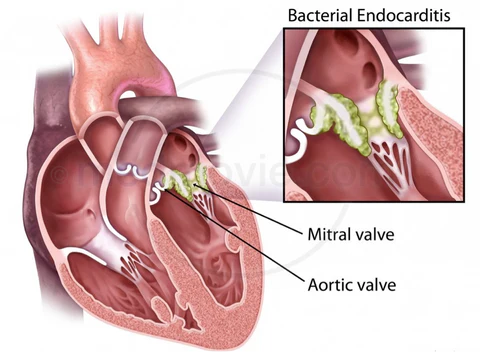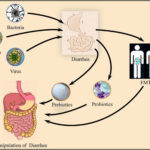Bacterial endocarditis, also known as infective endocarditis (IE), is a severe infection that affects the inner lining of the heart (endocardium) and heart valves. It typically occurs when bacteria from another part of the body, such as the mouth or skin, enter the bloodstream and attach to damaged areas of the heart. If untreated, this condition can lead to life-threatening complications, including heart failure and systemic embolism. Understanding its causes, symptoms, diagnosis, and treatment is crucial for effective management.

Causes and Risk Factors
Bacterial endocarditis is commonly caused by bacteria such as Staphylococcus aureus, Streptococcus viridans, and Enterococcus species. These microorganisms enter the bloodstream through:
- Dental Procedures: Poor oral hygiene or invasive dental treatments can introduce bacteria.
- Medical Procedures: Catheter use, surgeries, or intravenous drug use.
- Infections: Skin abscesses, urinary tract infections, or other systemic infections.
Risk factors include:
- Pre-existing heart conditions (e.g., congenital heart defects, rheumatic heart disease)
- Prosthetic heart valves
- Previous history of endocarditis
- Intravenous drug use
- Immunosuppressive conditions (e.g., diabetes, cancer)
Symptoms of Bacterial Endocarditis
Symptoms can vary based on the severity and the patient’s underlying health condition. Common signs include:
- Fever and Chills: Persistent fever is a hallmark symptom.
- Heart Murmur: New or changing heart murmurs often indicate valve involvement.
- Fatigue: General weakness and lethargy.
- Skin Changes:
- Petechiae: Tiny red or purple spots on the skin, eyes, or mucous membranes.
- Osler’s Nodes: Painful, red nodules on fingers and toes.
- Janeway Lesions: Painless spots on palms and soles.
- Shortness of Breath: Often due to congestive heart failure.
- Other Symptoms: Night sweats, weight loss, and joint pain.
Diagnosis
Accurate and timely diagnosis is critical for successful treatment. The following methods are commonly used:
- Blood Cultures:
- Multiple samples identify causative bacteria.
- Detects antibiotic resistance patterns.
- Echocardiography:
- Transthoracic Echocardiogram (TTE): Non-invasive imaging to visualize the heart.
- Transesophageal Echocardiogram (TEE): Provides detailed views of the valves and chambers.
- Complete Blood Count (CBC):
- Indicates elevated white blood cells (WBC) suggestive of infection.
- C-reactive Protein (CRP) and Erythrocyte Sedimentation Rate (ESR):
- Detect inflammation levels.
- Chest X-ray:
- Identifies lung complications such as emboli.
Treatment Options
The primary goal of treatment is to eliminate the infection and repair heart damage. Common approaches include:
- Antibiotic Therapy:
- High-dose intravenous antibiotics tailored to the identified bacteria.
- Treatment duration ranges from 4 to 6 weeks.
- Surgical Intervention:
- Indicated for severe valve damage, persistent infection, or large vegetations.
- Valve repair or replacement may be required.
- Management of Complications:
- Addressing embolic events, heart failure, or abscesses.
Prevention Strategies
Preventing bacterial endocarditis involves reducing risk factors and improving overall health. Key measures include:
- Good Oral Hygiene: Regular brushing, flossing, and dental check-ups.
- Prophylactic Antibiotics: For high-risk individuals undergoing dental or medical procedures.
- Lifestyle Changes: Avoid intravenous drug use and manage chronic health conditions.
- Regular Medical Monitoring: Especially for those with a history of heart disease or valve replacement.
Potential Complications
Complications of untreated bacterial endocarditis can be devastating. These include:
- Heart Failure: Resulting from damaged heart valves.
- Systemic Embolism: Bacteria-laden clots traveling to major organs.
- Stroke: Due to embolic events in cerebral arteries.
- Abscess Formation: In the heart or other organs.
Pathogenesis of Bacterial Endocarditis
Bacterial endocarditis is a life-threatening condition requiring prompt diagnosis and treatment. Awareness of its causes, symptoms, and management strategies can significantly improve patient outcomes. Proactive measures, including good hygiene and regular medical care, are essential for prevention. Stay informed and consult healthcare professionals if symptoms arise to ensure timely intervention.

